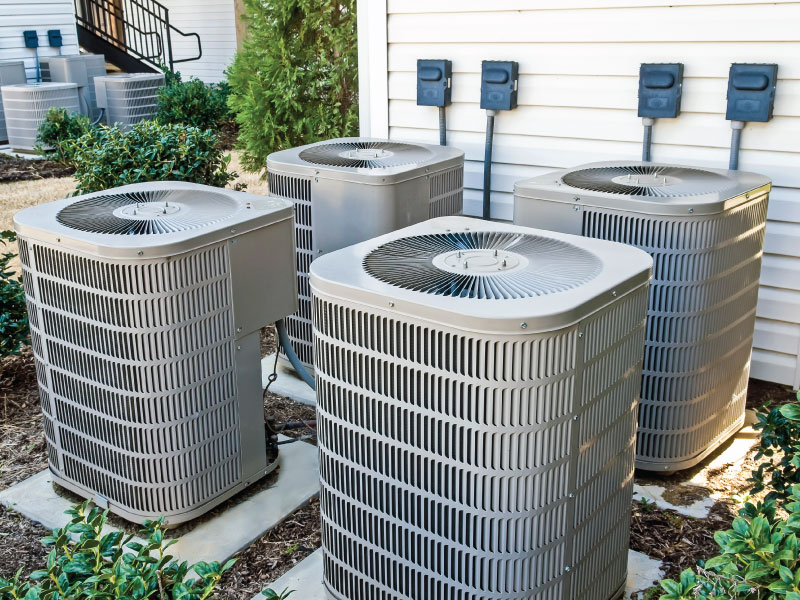When it comes to keeping your home comfortable year-round, few systems are as essential as your HVAC system. Heating, ventilation, and air conditioning play a huge role in regulating your indoor environment, improving air quality, and keeping your utility bills manageable. So when it’s time to replace or install a new system, a common question arises: How much should a good HVAC system cost?
The answer depends on several factors including the size of your home, the type of system, your local climate, energy efficiency ratings, and installation complexity. Let’s break it down so you know what to expect and how to make a smart investment in your home comfort.
The Average Cost of a New HVAC System
On average, a complete HVAC system—including both heating and cooling—can cost between $7,000 and $15,000 for most homes in the United States. This range includes equipment, labor, and materials, but the exact cost can vary based on the type of system and the size of your home.
Here’s a breakdown of typical price ranges:
- Split System (AC and Furnace): $8,000–$14,000
- Heat Pump System: $7,500–$13,000
- Ductless Mini-Split System: $5,000–$10,000 per zone
- High-Efficiency Systems: $10,000–$18,000+
What Affects HVAC System Pricing?
Several key factors can influence the final cost of your system:
1. Home Size and Square Footage
Larger homes require more powerful systems to maintain comfortable temperatures. A small 1,000-square-foot home may need a 1.5 to 2-ton unit, while a 3,000-square-foot home could require a 4 to 5-ton unit. More tonnage means more cost, both for the unit itself and for the energy it consumes.
2. Type of System
The choice between central air with a furnace, a heat pump, or a ductless mini-split will significantly impact cost. Heat pumps offer both heating and cooling in one unit and are particularly efficient in milder climates, while traditional gas furnaces may be better suited to colder regions.
3. Energy Efficiency
Systems with higher SEER (Seasonal Energy Efficiency Ratio) ratings may cost more up front, but they save you money over time with lower monthly energy bills. If you are planning to stay in your home for many years, investing in a high-efficiency unit can pay off in the long run.
4. Ductwork
If your home has old, leaky, or no ductwork at all, you may need duct repair or installation, which can add $1,500 to $5,000 or more to your total project cost. Ductless systems eliminate this concern, but are priced per zone and may not be ideal for larger homes.
5. Installation Complexity
The more complex the installation, the higher the labor cost. Factors like accessibility, permits, electrical upgrades, or equipment relocation can all increase installation expenses. Always request a detailed quote to understand what is included.
6. Location and Regional Costs
Where you live affects labor rates, equipment availability, and the type of system that works best for your climate. In hot, humid places like Texas, efficient air conditioning is a must—and coastal regions may require corrosion-resistant systems like Carrier Coastal units, which can cost slightly more but last longer.
Is a More Expensive System Worth It?
In most cases, yes—if you’re paying for energy efficiency, a trusted brand, and professional installation. Cheaper systems may seem like a bargain up front, but they can result in higher monthly bills, more frequent repairs, and shorter lifespans.
Look for brands with strong warranties, positive customer reviews, and ENERGY STAR® certifications. And remember, a poorly installed top-tier system won’t perform well—so always choose a licensed, experienced contractor who stands behind their work.
Financing and Long-Term Value
Many HVAC companies offer financing options to make investing in a new system more manageable. Whether it’s zero-percent financing for qualified buyers or flexible monthly payment plans, spreading the cost out can make a high-quality system more accessible without draining your savings.
Plus, a good HVAC system adds to your home’s value. Buyers are more likely to pay top dollar for a house with a newer, efficient system that they know they won’t have to replace any time soon.
In Review..
A good HVAC system is more than just a purchase—it’s an investment in your home’s comfort, energy efficiency, and resale value. While prices can vary, most homeowners should expect to spend between $7,000 and $15,000 depending on their specific needs and preferences.
Before you make a decision, get multiple quotes, ask about system options, and be sure to work with a reputable HVAC company that will guide you through the process. The right system, installed by the right team, will keep you cool in the summer, warm in the winter, and worry-free for years to come. To learn more about our San Antonio HVAC Installation service please click the link provided.

